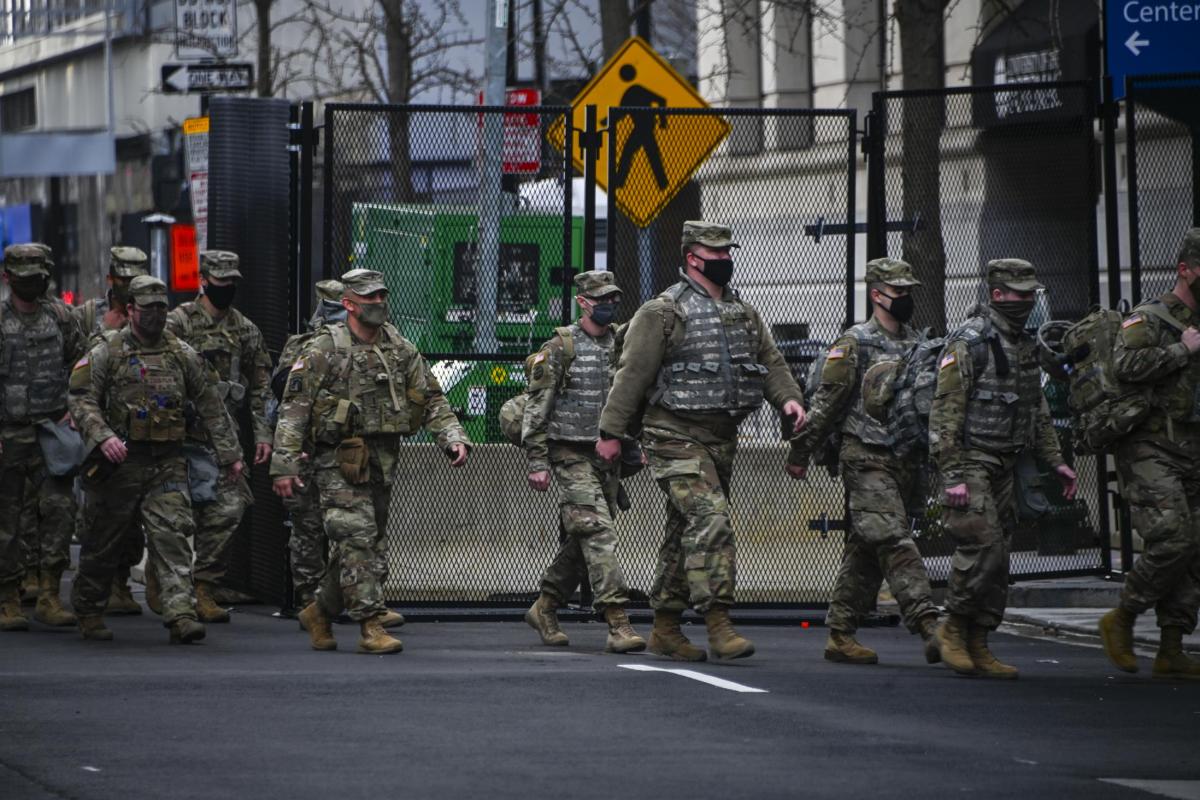
Joseph R. Biden Jr., the former vice president and former U.S. senator from Delaware, officially became the 46th president of the United States Wednesday during a swearing-in ceremony and inauguration like none other in American history.
With his left hand on a thick Bible that has been in his family since 1893, Biden was sworn into office by Supreme Court Chief Justice John Roberts amidst stringent security measures, including the presence of more than 25,000 National Guard troops, in Washington, D.C. following the failed Jan. 6 insurrection at the U.S. Capitol.
In his address, inside miles of tall barriers surrounding the Capitol and National Mall area, Biden called the inauguration a day of history, hope, renewal, and resolve. “Through a crucible for the ages, America has been tested anew and America has risen to the challenge,” Biden said, while pledging to bring the country together and tackle the array of crises facing the nation at the moment, including the deadly coronavirus pandemic. “Today, we celebrate the triumph not of a candidate, but of a cause, the cause of democracy.”
Shortly before Biden’s ceremony, Kamala D. Harris, the former senator from California, was sworn in as vice president of the United States. She stepped into American history as the highest-ranking woman officeholder ever.
There were only a handful of inauguration visitors in Washington on Wednesday. Citing security and COVID concerns, D.C. Mayor Muriel Bowser had asked people to stay away. MARC commuter trains from Baltimore to D.C. were suspended for the four days leading up the inauguration. The majority of those on hand expressed more of a sense of relief than celebration that the 78-year-old Biden had assumed the reins of power after four years of controversy and chaos from the Trump Administration.
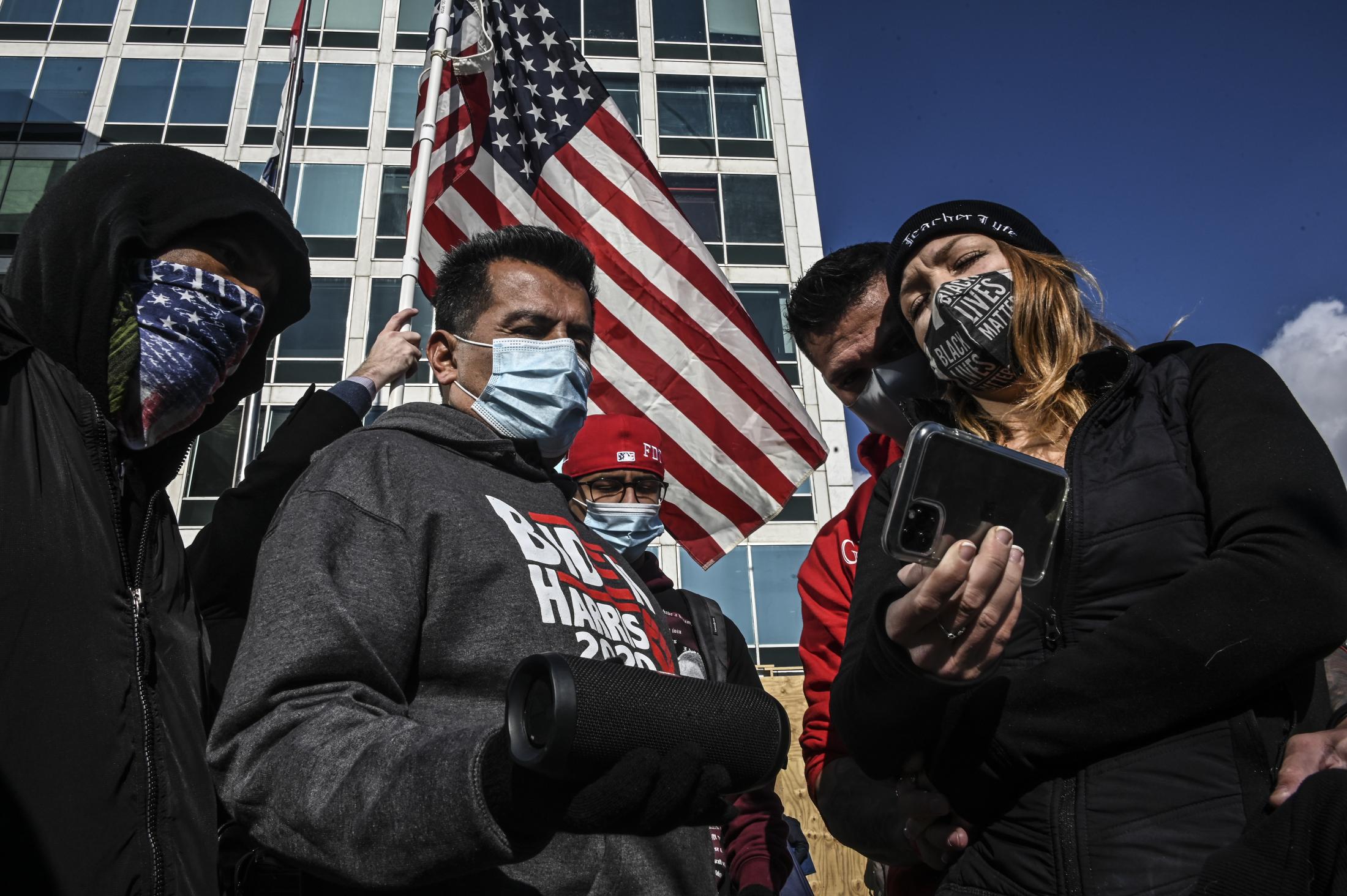
Former President Donald Trump became the first president to be impeached twice by the U.S. House of Representatives last week for his role in inciting the violent riot at the U.S. Capitol, which ended in five deaths and possibly led to the suicide several days later of a U.S. Capitol police officer.
The daughter of immigrant parents, an Indian mother, and Jamaican father, Harris is also the first Black person and the first American of South Asian descent to win the nation’s second-highest office. She was sworn in using two Bibles, one owned by a close childhood family friend, and the other owned by Baltimore-born Thurgood Marshall, the first Black Supreme Court justice. Sonia Sotomayer, the first Latina Supreme Court justice, administered the oath, creating a symbolic image that harkened to the diverse and optimistic inaugurations of former President Barack Obama.
Jem Peddie, a 42-year-old Washington native whose parents attended Howard University, as did Harris, flew home from Atlanta to Washington for the event. Specifically, she wanted to witness and honor Harris’ momentous inauguration.
“I’m here to celebrate herstory,” Peddie, a graduate of Atlanta’s historically black college, Morris Brown, said with a smile. “It is disappointing that you can’t see the ceremony [because of the perimeter lockdown], and that does take away from the celebration, but it doesn’t take anything away from the importance of the occasion.”
Rev. Marcia Smith, a 57-year-old pastor and college humanities instructor from Connecticut, echoed Peddie. “She broke the concrete ceiling,” Smith said of Harris. “She represents women of color like me, but also all women. She’s a role model for my daughter, my granddaughter, and my great-granddaughters to come.”
The massive presence of camouflaged armed soldiers and military Humvees was a surreal sight all week in the nation’s capital. Nothing akin to the such build up and security measures had been witnessed in the city since the foreign terrorist attacks of 9/11. Cornelius Wiley, 40, a former serviceman who spent time in Iraq as a Department of Defense civilian, compared the security and high-barricading around the U.S. Capitol and Mall to the four-mile, U.S. diplomatic Green Zone in Baghdad.
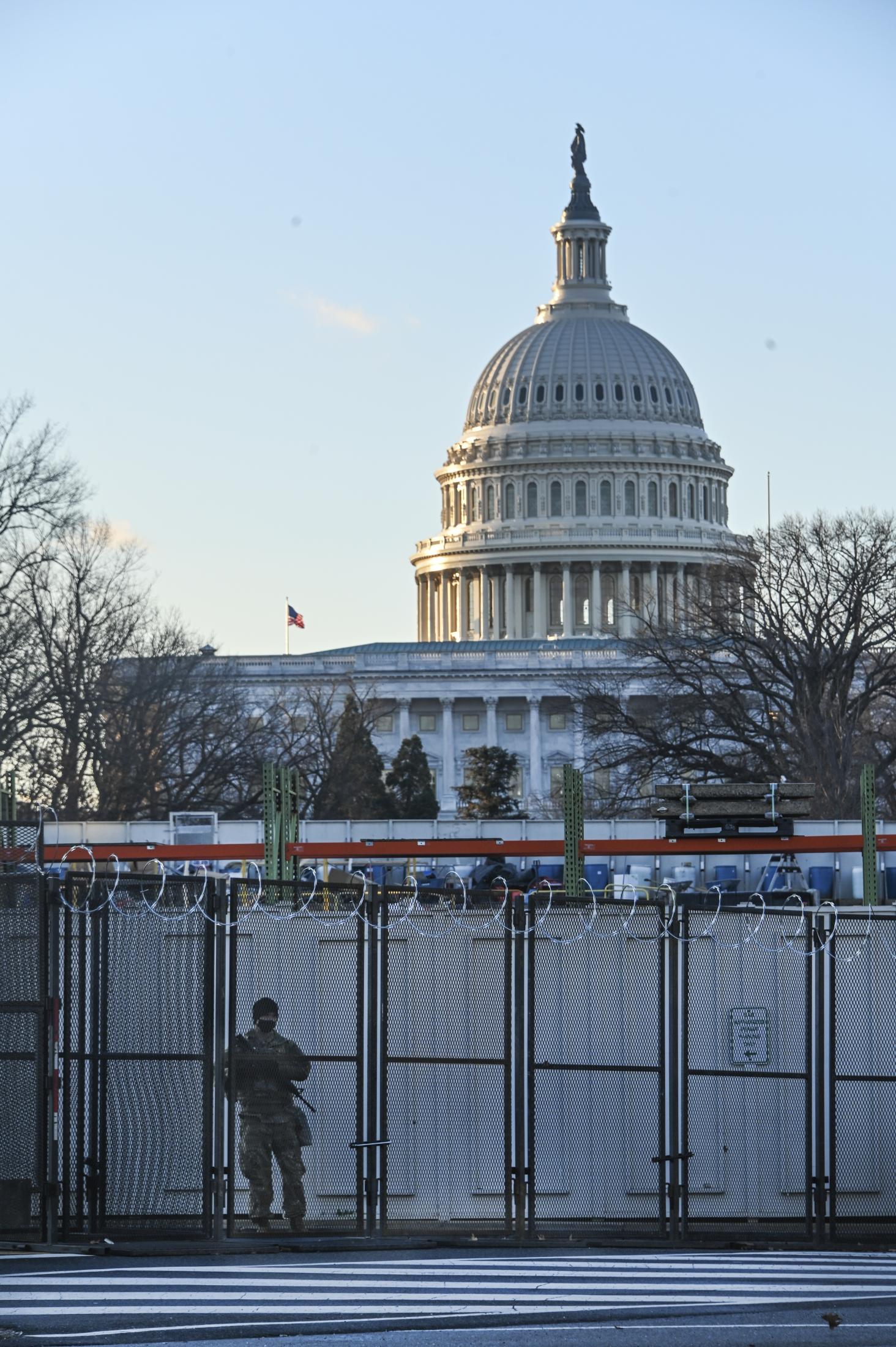
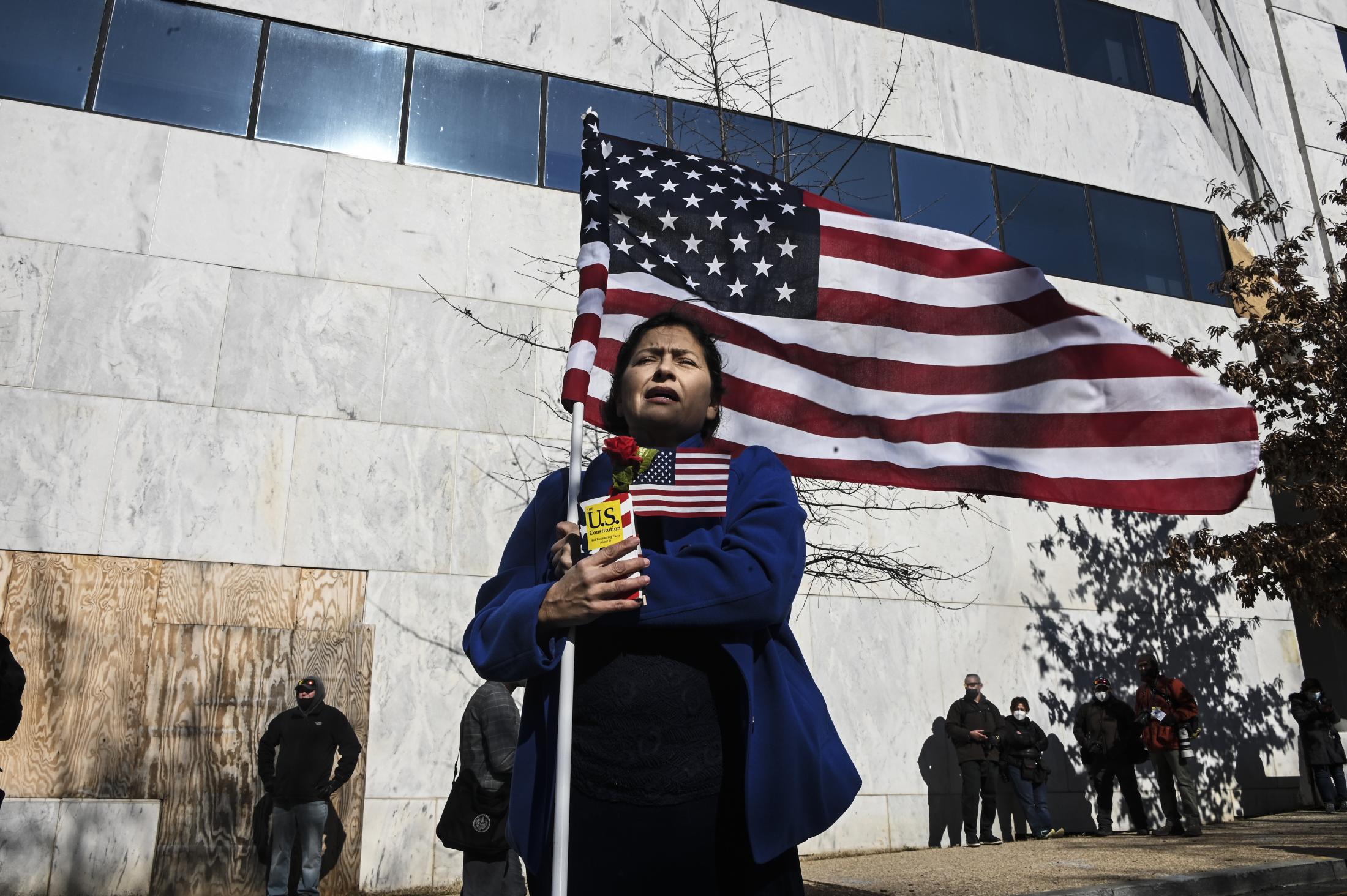
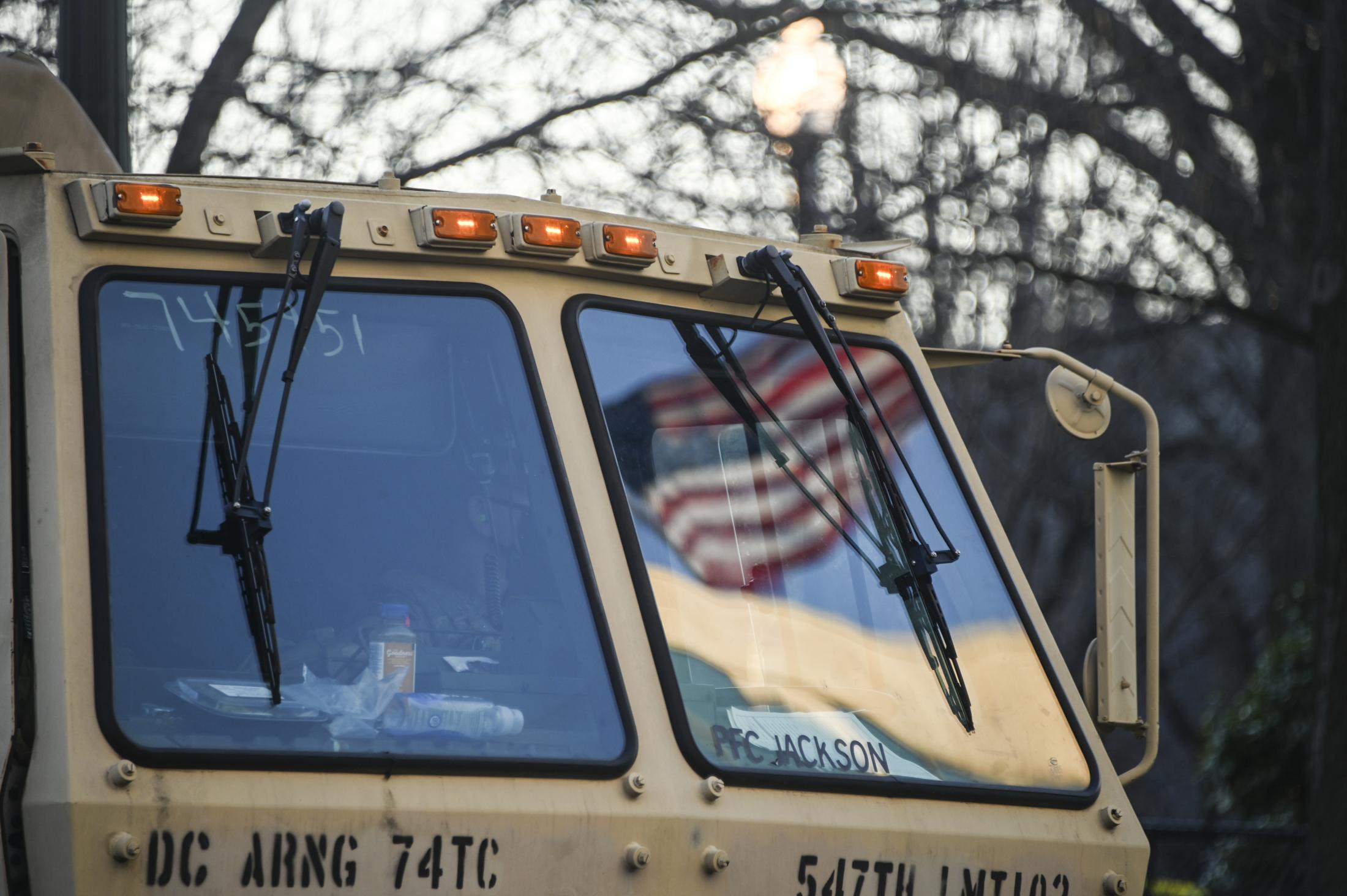
“I’ve ridden my bike around the entire thing, and Baghdad and the Green Zone is the only thing I’ve seen like it,” Wiley said. “You could move around freely inside the Green Zone. The difference, really, is outside. Once you stepped outside the Green Zone, that was it. Here, there are troops on street corners all over the place, outside the ‘Green Zone’ as well.”
Benjamin Jancewicz, a Baltimore activist and photographer who had been in Washington on Jan. 6 and captured parts of the riot from outside the Capitol, decided not to attend to the inauguration out of caution. He noted that the FBI had pulled 12 National Guard members from duty over security concerns related to white supremacist ties. Jancewicz, along with friend and fellow photographer Joe Cardamone, however, had gone to D.C. over the weekend to document the military preparations for the inauguration.
“One thing we both thought was that it’s surreal and fascinating to see how quickly and easily many people adapt [to the presence of heavily armed soldiers],” Jancewicz said. “People were going up to soldiers with long guns and asking for directions and posing for selfies. Joggers and cyclists kept going by as the barriers went up like it was business as usual.”
Cardamone, from Middle River, spent nine years in National Guard service and served in Iraq for a year between 2005 and 2006.
“It felt strange to be on the outside of ‘the wire,’” Cardamone said, “to feel like you’re in enemy territory in your own country.”
